![]() View a custom Google map of the buildings on our tour here:
View a custom Google map of the buildings on our tour here:
http://goo.gl/maps/LzEsQ
We’ll be meeting downstairs in the lobby area at 12:15 on Saturday. Be sure to sign up during registration if you’re interested!
A few glimpses of the buildings on our tour:

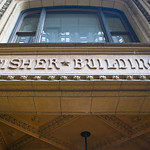
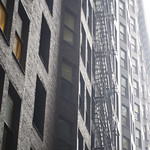
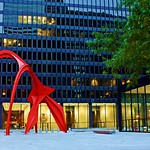

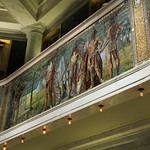


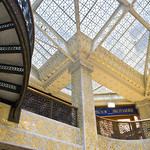
Notes from Clare Parkinson:
My architectural history professor, Richard Betts, used to say that in terms of architectural influence, Chicago is the third great city in the world, after Athens and Paris. Chicago is where modern architecture – steel-frame construction, the skyscraper – was born at the turn of the 20th century. There are still a few lovely buildings from this time, and some nice examples of the architecture of later times as well.
Read on for addresses and descriptions of a few of the buildings on this tour:
53 W. Jackson Blvd. Monadnock Block
North half 1889-91; south half 1891-93. Burnham and Root.
http://www.ci.chi.il.us/Landmarks/M/Monadnock.html
This building is like the before-and-after stages of modern architecture in a single building. The older north part of this building is loadbearing masonry – no structural steel. Just bricks and blocks piled up, old-school, each block in the wall bearing the weight of all the walls and floors above. Notice how thick the walls have to be at ground level to be strong enough to carry the weight of the building.
Professor Betts said that this is the tallest loadbearing masonry building in the world. It’s the last one built this way in Chicago. If you look at the south half of the building, you see the new technology that was being used just a few years later: steel-frame construction, in which the metal skeleton of the building bears the weight of walls and floors, allowing thinner walls, bigger windows, and taller buildings.
140 S Dearborn, the Marquette building.
1895. Holabird & Roche.
http://www.ci.chi.il.us/Landmarks/M/Marquette.html
This is an early steel-framed skyscraper. The exterior of the building is attractive but not particularly exciting (although it does have its cornice “hat”, which some early skyscrapers have lost), but you have to check out the lobby. It’s decorated with sculptures and mosaics depicting the early history of the Chicago area. The mosaics, by Tiffany, are gorgeous.
209 S Lasalle, the Rookery Building.
1885-88; Burnham & Root.
Lobby remodeled 1905-07, Frank Lloyd Wright.
http://www.ci.chi.il.us/Landmarks/R/RookeryBuilding.html
Go inside and look at the lobby. Awesome.
Daniel Burnham was one of the great architects of modern Chicago. He was chief architect of the 1893 World’s Columbian Exposition, which was sort of Chicago’s international debut as a powerful cultural city, and he designed the “Burnham plan”, the basic layout of Chicago, with parks along the lakeshore and diagonally radiating boulevards connecting the neighborhoods. His offices were in the Rookery, and Frank Lloyd Wright had an offices here as well. http://en.wikipedia.org/wiki/Daniel_Burnham